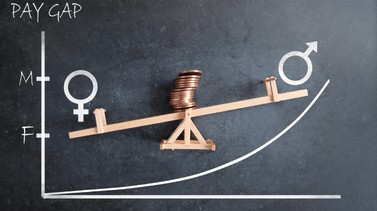Login
Your link will open in a new tab
If this has not happened, please click here
If this has not happened, please click here

Organisations are required to report their data on the gender pay gap. Recently the deadline to report this passed and the results from the reports are less than satisfactory. The analysis of the reports found an increase in the gap between gendered pay and 1 in 10 employers failed to report on their pay gap.
A total of 9,626 employers submitted their 2020-21 gender pay gap report by the deadline date (5th October) which is a significant 6.6% drop from the last comparable year, 2018-19. This decrease may be a result of the enforcement of the report being suspended for 2019-20 due to the pandemic which resulted in a 35.8% decrease in companies that reported their gap.
Of those organisations that did meet the deadline, 7,572 have a gender pay gap that favoured men, 1,286 a GPG that favoured women and 770 have no GPG at all.
When taking into consideration those who reported after the deadline, 9,715 employers reported this year which is a 10.4% drop from the 10,841 employers who reported (including after the deadline) in 2018-19.
Senior policy adviser for reward and recognition at the CIPD, Charles Cotton, has discussed the results of the reporting for this year. Cotton voiced his disappointment about the number of organisations that failed to report their pay gap, and said “We encourage those who haven’t yet reported, to do so as soon as possible, otherwise they risk enforcement action and possible damage to reputation”
Cotton went on to discuss the effects covid-19 has had on women in the workplace, “evidence suggests that economically, women have been adversely and disproportionately affected by the Covid 19 pandemic and now is not a time to be taking the foot off the pedal when it comes to equality in the workplace.
The CIPD is one of the many groups calling for the reports on the GPG to include an accompanying narrative and action plan, detailing why the gap is there and what the organisation is doing to decrease the gap. This comes after reports that the UK GPG reporting regime is more lenient when compared to the likes of Spain and France where the threshold for employer size is much lower and enforcement is more severe.
The different regions within the UK have seen many different rates of reporting, analysis of the reports have shown that the largest decrease in the number of employers submitting GPG reports are Yorkshire and the Humber (16%), West Midlands (15%) and Scotland and Wales (14%).
The decrease in the reporting of GPG has also been accompanied by a widening of the gender pay gap. The analysis of the reporting discovered that the median figure for hourly earning has got worse in comparison to 2018-19, rising from 9.5% to 10.4%, however, the mean figure has remained virtually the same (13.3%). The highest median gap reported, has been found in London (12.4%) and the southeast (11.6%). whilst the lowest median gap reported has been seen in wales (7.2%) and Scotland (7.6%)
The range of GPG reported varies drastically depending on the sector being discussed. The sectors that were found to have the highest average gender pay gaps were the following:
While in contrast, the sectors with the lowest average gender pay gap were:
If you have any further questions or queries about the content above or would like to request a demo for oneHR, please don’t hesitate to contact the oneHR team today.
Twitter: @oneHR_